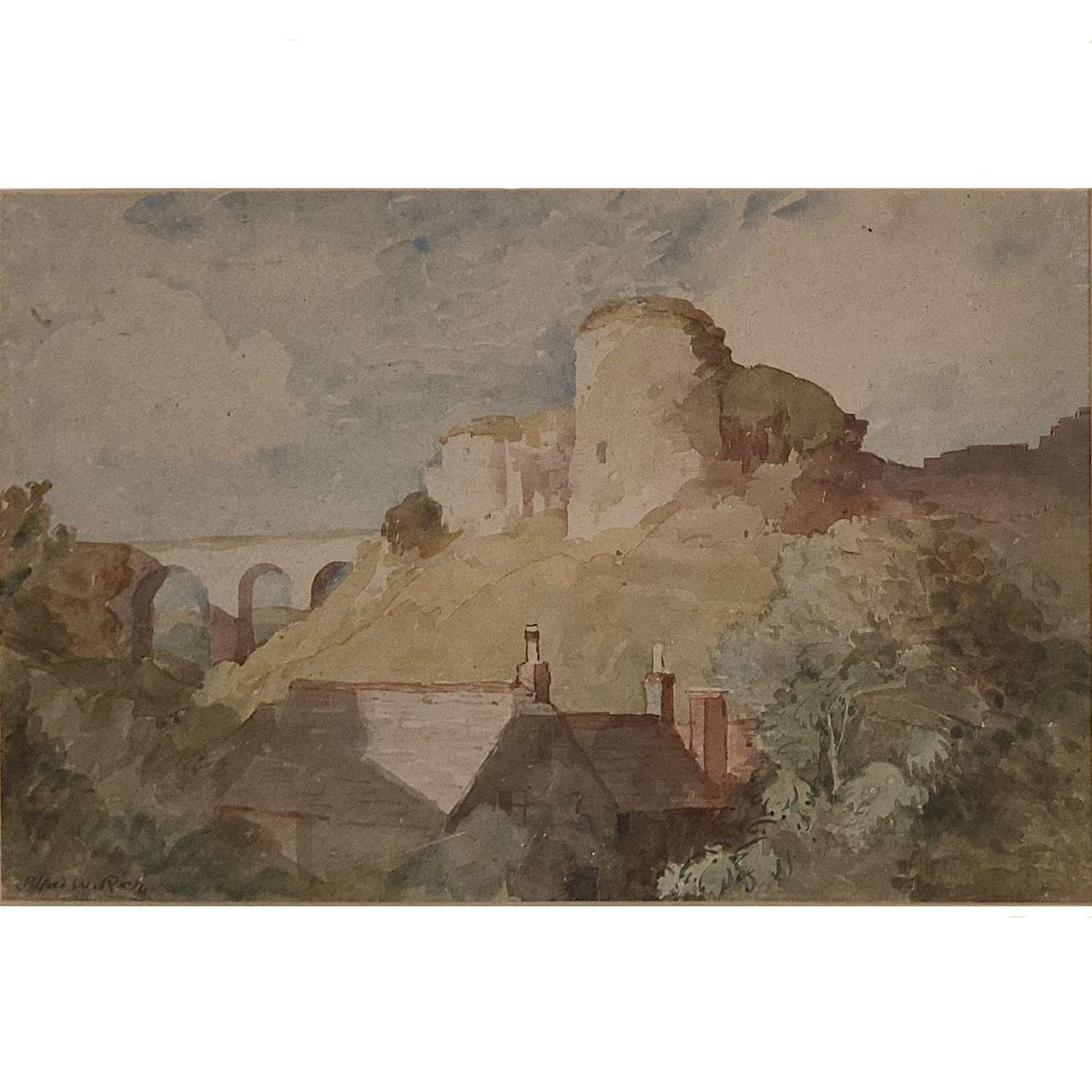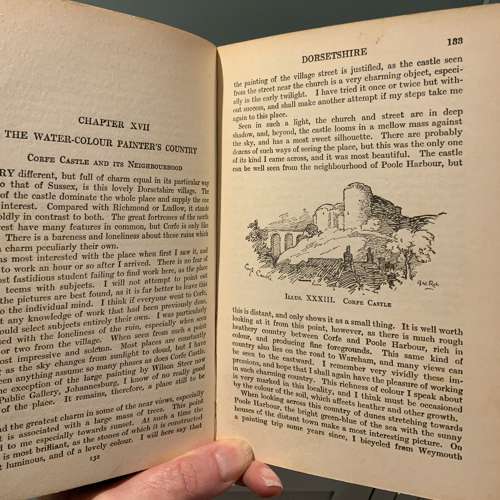
Code: 11011
Dimensions:
Alfred William RICH, N.E.A.C. (1856-1921)
“Corfe Castle”
Signed “Alfred W Rich” lower left
Watercolour on oatmeal paper
Measures:-
26.5 cm x 41.2 cm
Literature:-
Illus. XXXIII., p.133, Alfred W Rich, “Water Colour Painting”, Seeley, Service & Co Ltd, London, 1918 (sketch illustrated)
Exhibited:-
Possibly the work exhibited as "Corfe Castle", No.258 in the New English Art Club, Winter Exhibition, 1910.
Provenance:-
Private Collection, Cumberland, U.K.
This work is closely related to a painting of Corfe by Alfred W Rich now in The National Museum Wales (Amgueddfa Cymru), which formed part of the Davies Sisters' Collection and Bequest [see NMW A 16337]. The Davies' picture was acquired by Margaret Davies from Walkers Galleries in April 1923, along with four other works by the artist (at the same time she bought a watercolour by J.M.W. Turner).[1]
When reseaching the groundbreaking exhibition "Inquisitive Eyes: Slade Painters in Edwardian Wessex" (2016), the curator Geen Yarker noted that from around 1906/07 a number of Slade Trained artists began painting in Dorset, possibly using the hospitality of John Everett at Arfleet Mill at Corfe.[2] Rich may well have painted alongside his friends and colleagues Henry Tonks and Philip Wilson Steer, who both painted similar views around this time. Steer's major painting "Corfe Castle" (Johannesburg Art Gallery) which takes a more distant viewpoint, was exhibited at the Summer 1910 NEAC exhibition.
A vignette illustration which is identical to this work appears in Rich's book "Water Colour Painting", where the artist writes that he can "heartily recommend the beauties of the place".[3] Corfe Castle was one of the last remaining Royalist strongholds in southern England during the English Civil War. It was besieged twice: once, unsuccessfully, in 1643 and then again in 1645, after which it was slighted on the orders of the Parliamentary forces leaving a set of striking ruins. In his colouring and tonal values the artist is much influenced by early Turner watercolours. He has concentrated on the towers of the Outer Gate with the arches of the footbridge leading up to it. As is so often the case with Rich, the inclusion of the roofs of modern dwellings in the foreground provides a layering of history within a single viewpoint which means that, as we observe the picture, we are, almost literally, looking back in time.
Notes:-
[1] p.13/14 & p.66, McIntyre
[2] p.118, Yarker
[3] p.133, Rich
Bibliography:-
Gwen Yarker, "Inquisitive Eyes: Slade Painters in Edwardian Wessex", Sansom & Co, 2016
Bethany McIntyre, "Sisters Select: Works on Paper From the Davies Collection", Cardiff, National Museums & Galleries of Wales, 2000
Alfred W Rich, 'Water Colour Painting", Londonm Seeley, Service & Co Ltd, 1918
This work will be included in the forthcoming Alfred William Rich catalogue raisonné.
